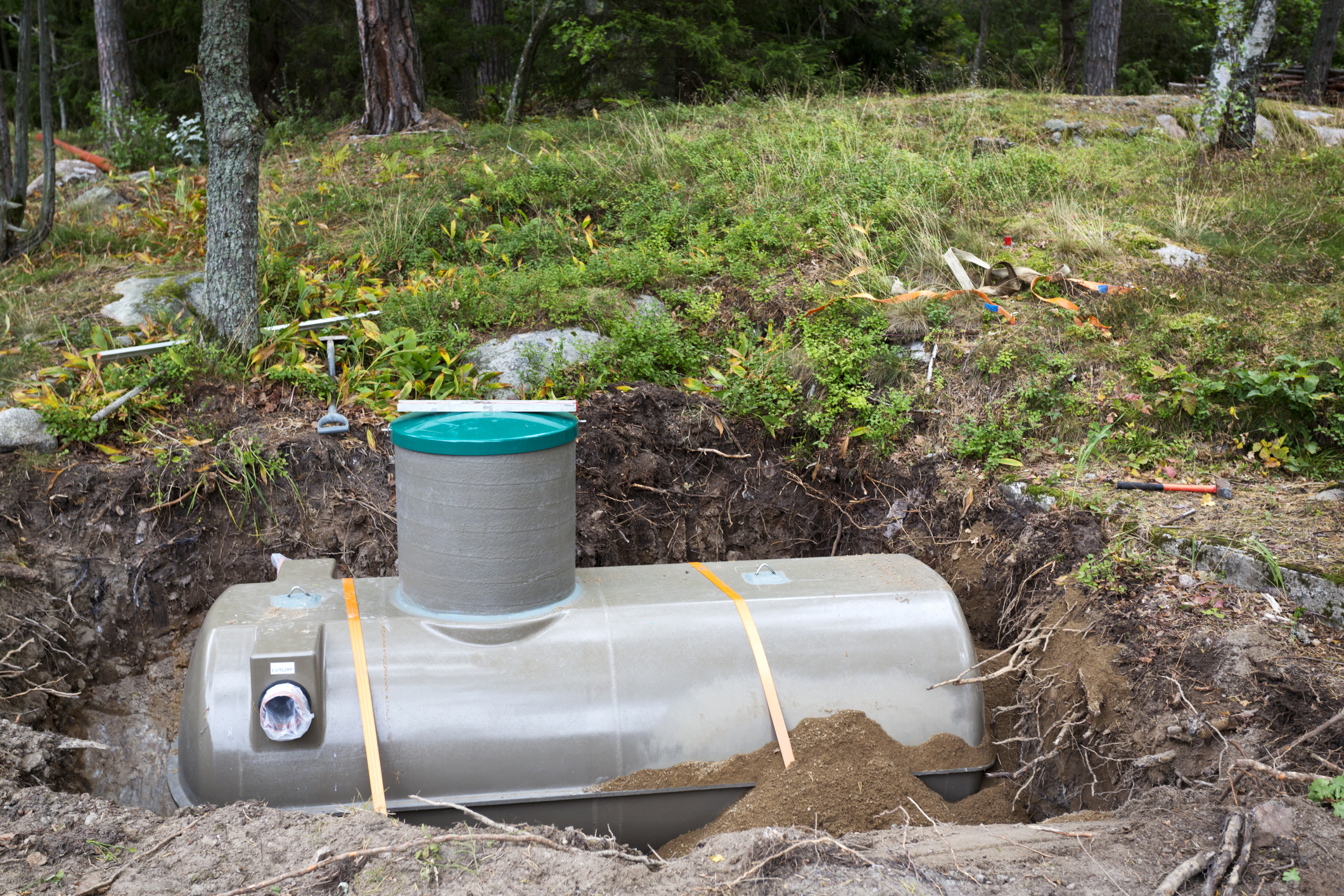Off Mains Drainage Solutions
Many rural plots and houses in need of work are located away from the main sewers. Luckily, there are several off-mains drainage options to choose from

As development takes us beyond the reach and capacity of the mains sewer systems, the number of people having to contemplate living off mains drainage is increasing. That said, there are options and choices to be made for your foul water drainage, and understanding the terminology is a good place to start.
Cesspit or Cesspool
A cesspit (often called a cesspool — there’s no difference) is essentially a holding tank. There is no outlet and no intent to treat or discharge the sewage. It is merely collected in the tank then periodically pumped into a lorry for disposal. The tank is generally sized to hold six to eight weeks of sewage and vented to allow gas build-up to escape but is otherwise sealed. Cesspits are banned in Scotland and are considered a last-resort option in the rest of the UK.
Emptying a cesspit will cost between £100 and £300 each time and it may need doing eight times each year.
Septic Tank
This construction is very similar to a cesspit but compartmentalised to allow the separation of solid and liquid waste. Solids are retained in the tank and liquid discharged to a drainage field or mould to be cleaned by percolation through soil. Solids are emptied from the tank in the same way as a cesspit but typically this will only be done once or twice each year.
Such a system relies on the subsoil being capable of receiving the final discharge without backing up and preventing the unit from working. This is determined by a percolation test. In the event that the ground is unsuitable then, then it is usual to employ a sewage treatment plant.
Septic tanks are a common solution for off mains properties. Capital cost is low, running cost is low and it is a well understood system. You can read more about what is a septic tank in our expert guide.
Sewage Treatment Plant
Don’t be put off by the grand name — many are domestic in scale and modestly priced. In most models, compressed air blown into the bottom of the tank accelerates the activity of the microorganisms which break down the waste. The tank may have rotating discs which increase the surface area for the microorganisms to work on and speeds up the degradation of solid matter.
The liquid is treated and can be discharged to a drainage field or mould (and in some circumstances, discharge to a water course). The volume of solid matter is significantly reduced, but still needs pumping into a lorry for disposal.
Treatment plants are more expensive than septic tanks but this is soon recovered in lower running costs (some, such as WTE’s FilterPod, don’t need electricity at all). Often they cost between £2,000-£6,000 but only need emptying every one to three years — four years in some cases.
They are fast becoming the preferred option as they’re cleaner and relatively low on maintenance and running costs.
Drainage Fields and Mounds
Both are a means of allowing water to slowly dissipate through the soil. The choice and design will be determined by the amount of space available and by porosity or percolation tests. These tests will establish how quickly water can dissipate.
Drainage fields and mounds are used to deal with liquid discharge from septic tanks and sewage treatment plants. (They are often incorrectly referred to as ‘soakways’, which are different and instead used to deal with surface water — ie rainwater run off from roofs.)
Reed Beds
Reed beds are not usually a complete sewage treatment system on their own but are generally used with a septic tank or treatment plant. They allow microorganisms to digest the sewage and clean the water. There are two basic types of reed bed – vertical flow and horizontal flow – and the best system often results from combining the two.
Reed beds are the ecological solution. They do largely the same job as a treatment plant, but produce cleaner water and need a septic tank as well. They’re prettier to look at and provide a rich habitat, but are difficult to justify on any other grounds.
Conclusion
If you have reasonably good soil conditions, living off main drains should be a non-issue. A treatment plant and a drainage field or mound (with or without a reed bed) is a simple and effective solution. Even in poor soil conditions living off mains is still possible, but there is a capital cost issue.
Get the Homebuilding & Renovating Newsletter
Bring your dream home to life with expert advice, how to guides and design inspiration. Sign up for our newsletter and get two free tickets to a Homebuilding & Renovating Show near you.
Tim is an expert in sustainable building methods and energy efficiency in residential homes and writes on the subject for magazines and national newspapers. He is the author of The Sustainable Building Bible, Simply Sustainable Homes and Anaerobic Digestion - Making Biogas - Making Energy: The Earthscan Expert Guide.
His interest in renewable energy and sustainability was first inspired by visits to the Royal Festival Hall heat pump and the Edmonton heat-from-waste projects. In 1979
this initial burst of enthusiasm lead to him trying (and failing) to build a biogas digester to convert pig manure into fuel, at a Kent oast-house, his first conversion project.
Moving in 2002 to a small-holding in South Wales, providing as it did access to a wider range of natural resources, fanned his enthusiasm for sustainability. He went on to install renewable technology at the property, including biomass boiler and wind turbine.
He formally ran energy efficiency consultancy WeatherWorks and was a speaker and expert at the Homebuilding & Renovating Shows across the country.

